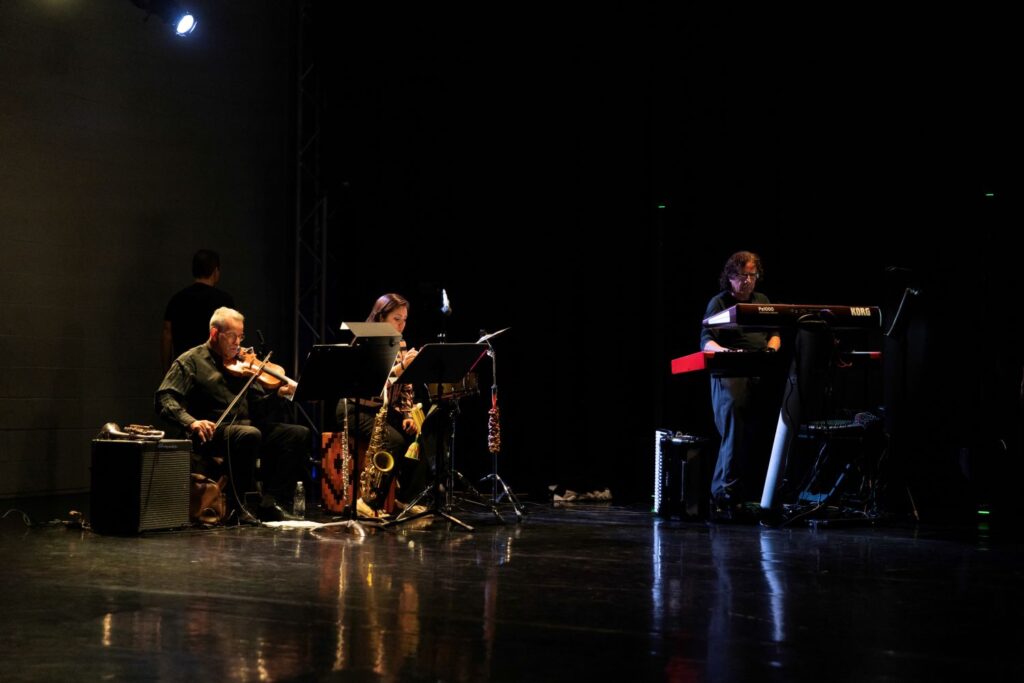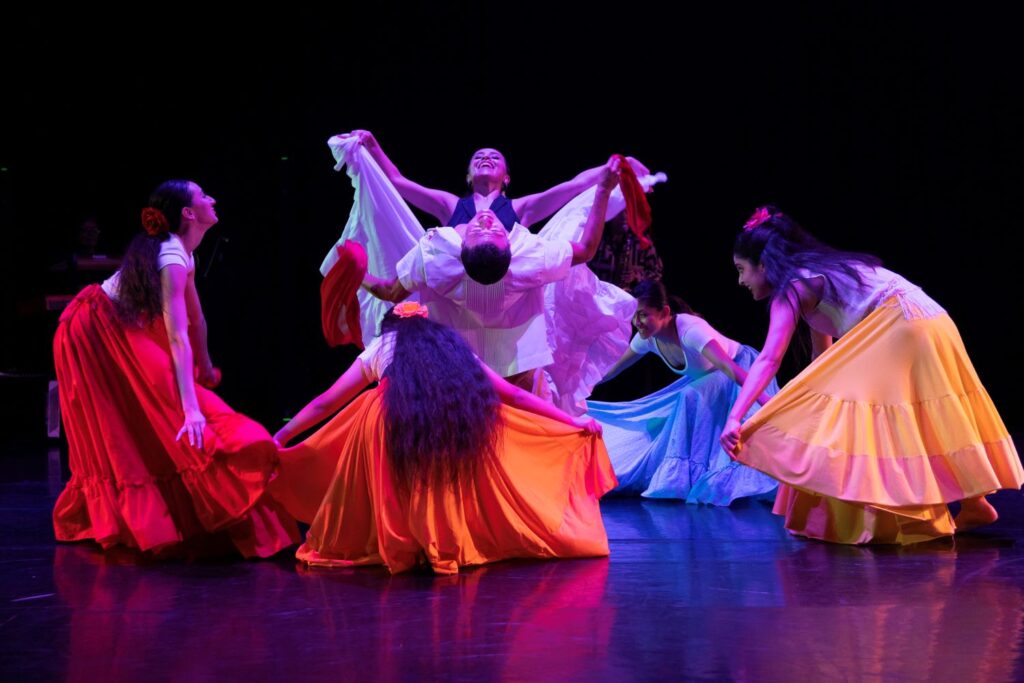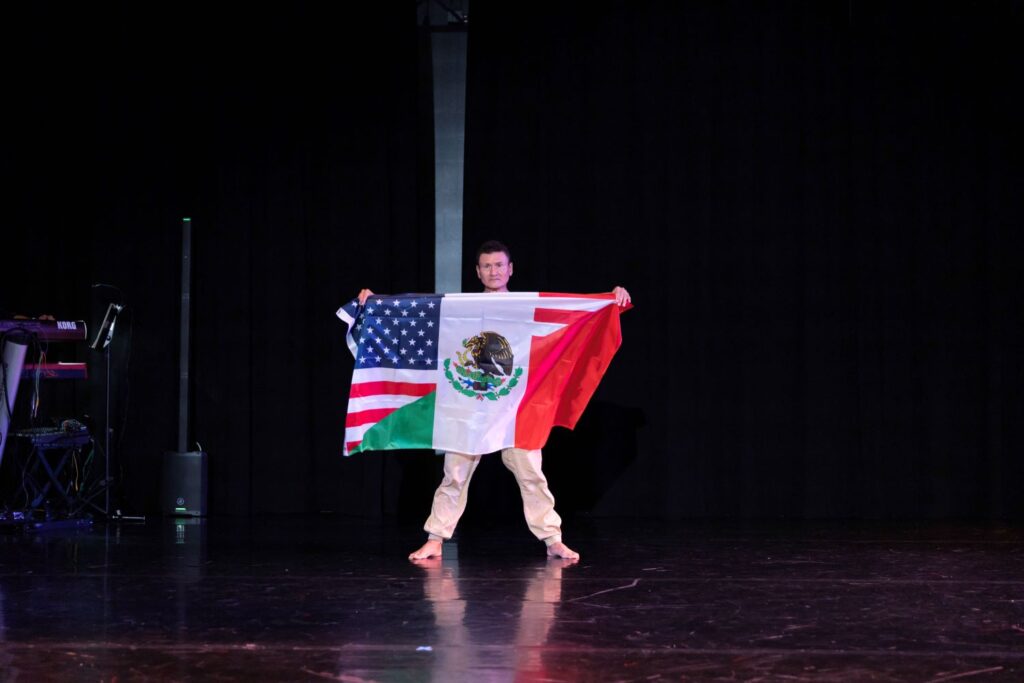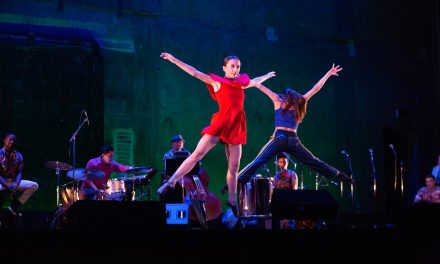This was a story, a journey, told in ten parts through the cultural lens of Celeste Lanuza. Although described by her as her MFA graduate work from UC Irvine, it was demonstrably a family affair. The Artistic Direction was by Cynthia Morales, mother to Celeste, While the Music Director was Federico Lanuza, her father. This family, having worked together before, was instrumental in realizing this iteration of “El Camino al Alma”. A part of this realization was multi-generational dancers including father and mother, professional colleagues and students all bringing this vision to life.

Celeste Lanuza and Cynthia Morales in “El Camino al Alma” choreography by Celeste Lanzua – Photo by Denise Leitner.
Federico Lanuza was responsible for the live music performed during the piece which was fantastic. Two other musicians accompanied him, Claudia Medina and Dan Weinstein. Lanuza on keyboards with Weinstein on strings and Medina on sax and various other instruments. They added a great deal to the show evoking emotional responses to the choreography and acting throughout. There were songs created by Celeste and Federico Lanuza as well as text. One of the musical duets between father and daughter was an intense tango while both played the same accordion. This was very physical and enveloped both while partnering the accordion, no easy task. Most of the spoken word was taken from the unfinished memoir of José Limón.
Program notes state that the work is a “reflection on the lived experiences of Latino communities in the United States”. An early section speaks of the land, the rocks and trees, and the people, Lanuzas’ people, being a part of it. I was reminded at once of the Treaty of Guadalupe Hidalgo 1848, which ended the war between the United States and Mexico, where Mexico ceded 55% of its territory, including the present-day states of California, Nevada, Utah, New Mexico, most of Arizona and Colorado, and parts of Oklahoma, Kansas and Wyoming. This left a great deal of Mexican nationals, not to mention the many Native American tribes, suddenly residents and citizens of the U.S.
In one section a Latino Man, played by Albertossy Espinoza is isolated and beaten by antagonists in dark clothing. This, unfortunately, is a scene that was as true then as it is now. He has a vision of three women representing cultural ideals important to him. There is a song about how valuable his soul is. He is raised up in hope and there is a celebration of united allegiance to both Mexico and the U.S. by the visual of a conjoined flag representing both countries as one. This was a powerful visual. The celebratory music was exuberant and captured beautifully the hope that the Latino community and all immigrants can live and dream and succeed in the U.S. as its promise once held.

Frederico Lanuza, Claudia Medina, and Dan Weinst in “El Camino al Alma” choreography by Celeste Lanuza – Photo by Denise Leitner.
Performers were: Elizabeth Altamirano, Albertossy Espinoza, Angelique Leon Diaz, Ashley Magaña, and Sofia Martinez.
Written by Brian Fretté for LA Dance Chronicle.
Featured image: Celeste Lanuza and Federico Lanuza in El Camino al Alma choreography by Celeste Lanuza – Photo by Denise Leitner.










The Lunuza family has been a very strong presence musically theatrically and in dance in southern California.
As well as in Mexico, all the way to New York.
This is not a surprise.